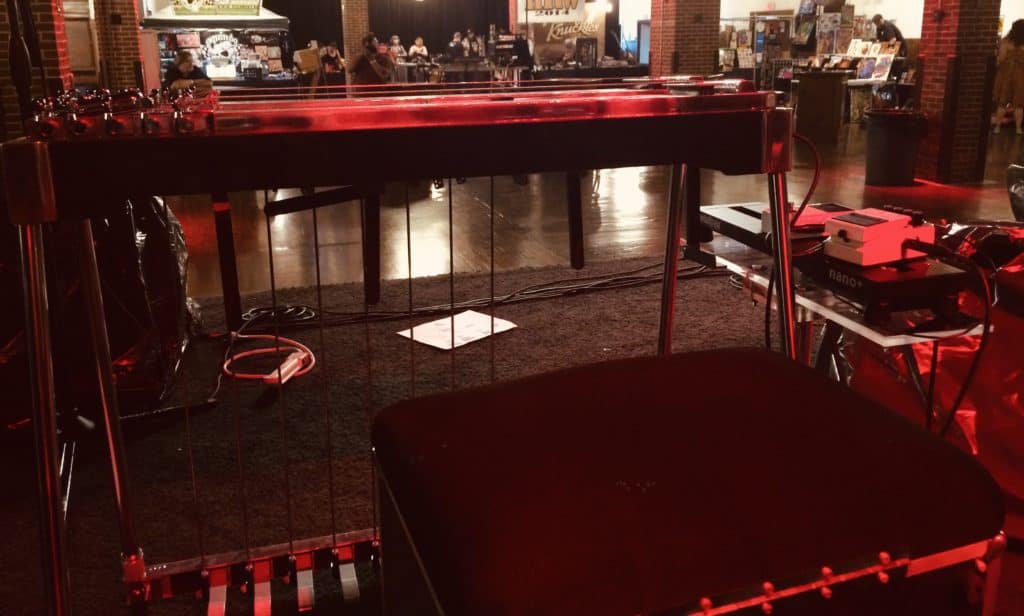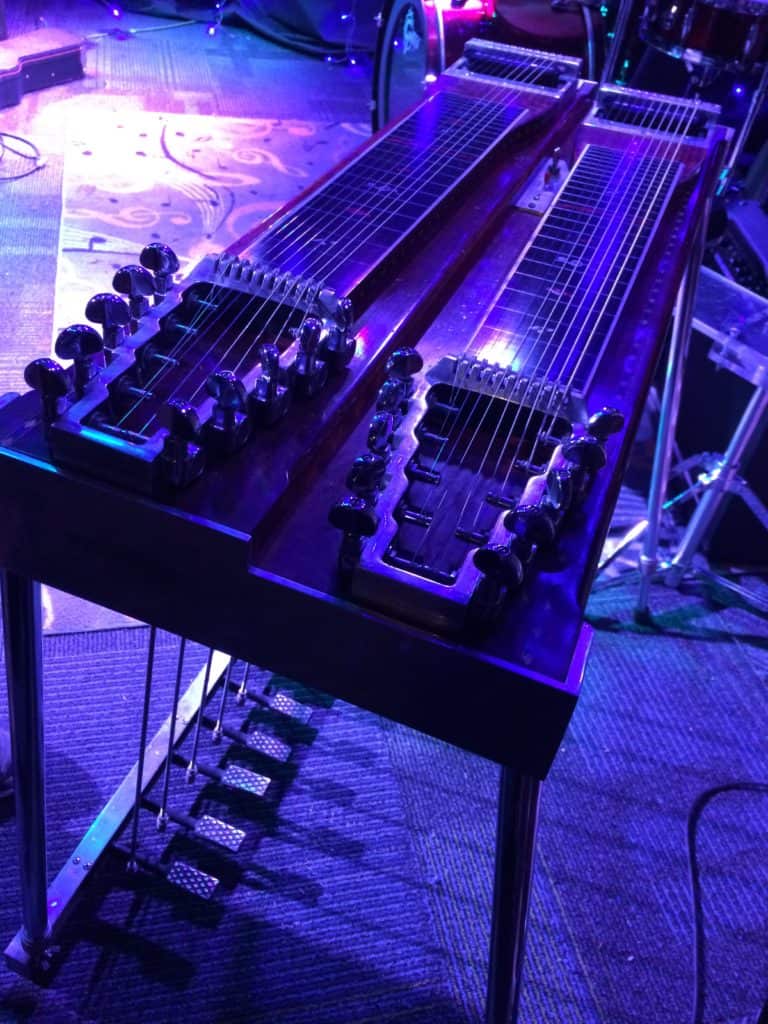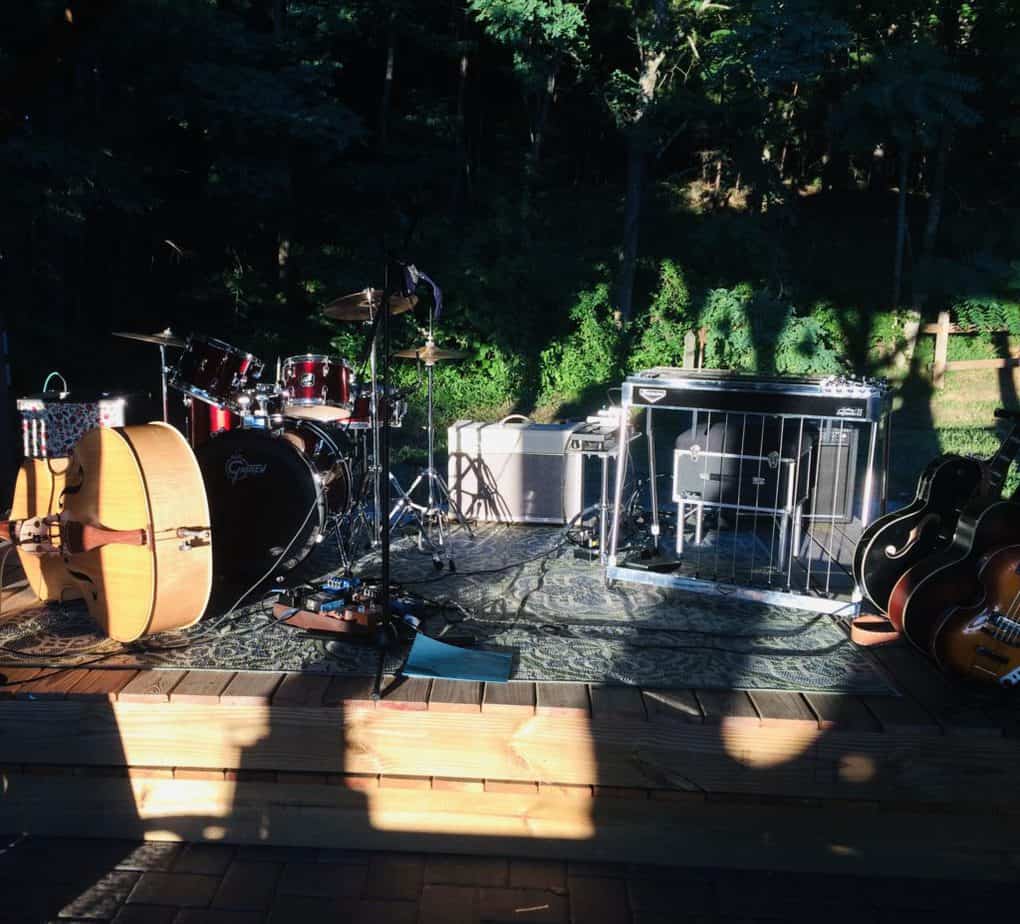As an Amazon Associate Playpedalsteel.com earns from qualifying purchases. This page contains affiliate links.
Many musicians are intrigued and drawn to the pedal steel guitar for its interesting sound. Yet it is renowned among musicians for being a difficult and challenging instrument to play.
But just how hard is it to learn and play the pedal steel guitar?
When you begin to play the instrument you quickly realize the amount of time that needs to be devoted to practicing it. It will definitely take time to become proficient at playing it.
The hardest thing about playing pedal steel guitar is that it requires a lot of physical coordination and technique development. A player usually uses both feet and legs to simultaneously control the foot pedals, volume pedal, and knee levers, which makes it difficult to accurately play notes on the instrument.
A pedal steel player also has to control a bar with their left hand to fret notes, while the right hand uses finger picks to pick the strings. Also, both the left hand and right hand are needed to dampen and mute certain strings that aren’t being played, making it even harder to play notes smoothly and efficiently on the instrument.
Keep in mind that pedal steel can pose less difficulty than you may think. Playing the pedal steel is just like anything, where the more time you put into it, the more you will get out of it!
With focused attention, practice, and consistency the pedal steel can be learned efficiently…
The Initial Challenges of Playing
At first, smoothly engaging the foot pedals, and timing their travel, can be challenging. A player with good technique usually holds their left foot above these pedals whenever they are playing the instrument.
This can be hard to physically sustain for longer periods of time. However, with practice, the leg’s physical stamina and muscle memory will improve and this will no longer feel like a laborious task.

The right foot usually rests on the volume pedal with the heel closer to the ground than the toes. As you produce notes, your foot will usually rock forward in a gradual manner to sustain the notes that were played,
You’ll have to be careful not to fully engage the pedal too quickly, which can create a loud and sudden cacophonous noise. This can also exert your right foot physically, as keeping the heel close to the ground and in a specific position can require a great deal of dexterity and stamina.
Using the volume pedal with your right foot will become more natural over time, and with practice, and so will using the left foot on your pedals. I posted an article that displays how much of an art it is to use a volume pedal for pedal steel.
The player’s legs also usually rest between knee levers that can be engaged by moving either leg to it’s right or left until the knee lever hits its stop. This must be done in coordination with the foot pedals and volume pedal, which can be tricky at first.
The Hardest Part of Playing Pedal Steel
Undoubtedly, the most difficult part of playing pedal steel is picking with the right hand and having to block or mute any strings that aren’t being played.
This is commonly referred to as right hand blocking, which usually isn’t required on standard six string guitar where a pick is commonly used.
The reason these other strings need to be muted is because the instrument is played with a bar across the strings. Any notes that aren’t being played will undesirably ring out as the others are being played.
Right hand blocking is often done by muting strings with the palm of the hand, as well as using the fingerpicks to block certain notes. Wearing fingerpicks and a thumbpick also makes this difficult.

Many people find it uncomfortable and unnatural to wear fingerpicks on their fingers and to use them to pick the strings.
Guitar players will often find that wearing fingerpicks and thumbpicks can be hard at first. Picking the strings with accurate timing compared to using a regular pick on guitar can be difficult.
Finding a balance between blocking and picking certain strings or string groups with precision, and good timing, is crucial.
The Difficulty of Controlling The Bar
Since the pedal steel is a fretless instrument, you must use a bar to accurately pitch the notes of the strings. This can be hard to do because it requires you to physically manipulate the bar while making sure the notes they play are in tune with the music.
This requires the bar to have a certain pressure downward on the strings to sustain the notes, and the bar usually has to be kept at a straight angle in order to voice the notes accurately.
Because of these aspects of bar control, playing in tune with other instruments and music is a hard part of learning to play the pedal steel.
Practicing bar control, and gaining accuracy and consistency with it, is important in developing on the instrument.
The fingers on the player’s left side of the bar must also dampen the strings by resting lightly on top of the strings (behind the bar).
Usually when the bar sustains the notes on the instrument, vibrato is added. This is done by rolling or stirring the bar back and forth to create an effect similar to many singers’ voices.
Between all of these various aspects of bar control, it can take quite a lot of coordination and skill to master, making it another difficult task in playing the pedal steel.

Hard Even for Seasoned Pedal Steel Players
Because the pedal steel requires so much dexterity, skill, and coordination, playing the instrument is no easy task even for seasoned players.
Over time, pedal steel players will become more comfortable at the instrument, and muscle memory will assist them greatly. They’ll probably still need to maintain a high level of focus to accurately and genuinely express themselves through the instrument.
Most pedal steel players find it difficult to look up from the instrument as they are playing it. This shows how hard it can be to simultaneously use both of your arms and both of your legs, with high degrees of precision, and still sound musical.
Some pedal steel players have been known to practice in the dark in order to gain the ability to play the instrument without looking down at the fretboard. This can also be a beneficial way to improve the ears and feel of the player without relying on visual cues.
Buddy Emmons was a famous pedal steel player that helped pioneer this technique, and later in his career he can often be seen playing while looking up and around at his surroundings, often with a big smile on his face. Here’s a post I wrote that displays some great players’ creativity and ingenuity on the pedal steel.
Tougher Tunings
Another challenging aspect of learning pedal steel is that the tuning is different than many other stringed instruments. Most pedal steels have ten or more strings. This is just on one of the necks, some pedal steels have two necks with a total of 20 strings or more!
Some of these strings are chromatic as well, and incorporating these into playing can be difficult.

The pedal steel’s tuning is usually an open tuning, which many guitar and bass players aren’t as accustomed to. This requires many musicians to learn new scale shapes and patterns as well as chord positions and voicings.
Pedal Steel Gets Easier With Time and Practice
Many people give up, or don’t take up the instrument, because of how hard they think it is to play pedal steel. With time and practice, learning pedal steel can be very rewarding however.
If you can stick with it, and break the learning process down into parts, you will become more and more proficient in playing the pedal steel guitar. Playing it is a musical skill that not many people in the world possess!
Once you realize that playing pedal steel can be broken down into different components and techniques, it is helpful to begin learning these individually, while beginning the process of putting them together in a musical way.
This makes learning the instrument a lot easier, and it becomes a fun and creative way to make music. As you begin playing, check out Winnie Winston and Bill Keith’s Pedal Steel Guitar book (link to Amazon), which is a great reference to use as you dive into pedal steel.
Learning and playing pedal steel guitar can become more and more desirable as soon as you begin playing. Especially once you begin to hear the incredible sounds that the instrument is capable of producing.
To discover more about the pedal steel guitar check out this page…
